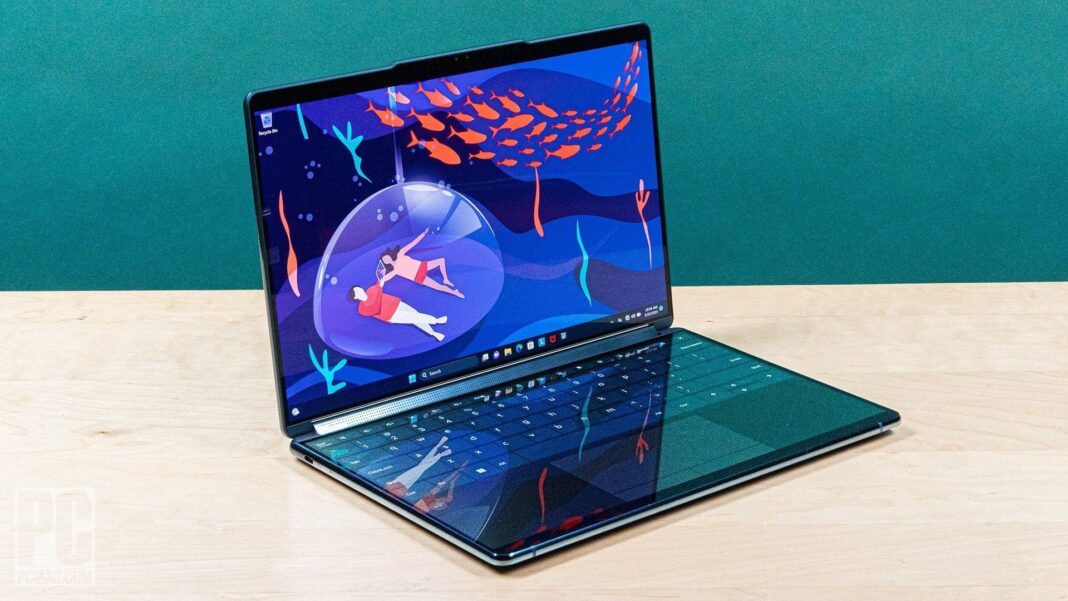In an age where multitasking has become second nature, the quest for the ultimate productivity device has never been fiercer. Enter the Lenovo Yoga Book 9i—an ambitious laptop that dares to challenge convention with its innovative dual-screen design. With two vivid displays that promise to elevate your workflow, the Yoga Book 9i has garnered attention for its potential to double your productivity. However, with such groundbreaking features comes a paradox: do two screens truly enhance efficiency, or do they introduce new complexities that may lead to double trouble? In this review, we’ll delve deep into the functionality, performance, and overall user experience of the Yoga Book 9i, navigating the fine line between innovation and overload.Join us as we uncover whether this revolutionary device is a game-changer or simply another gadget in a crowded market.
Exploring the Dual-Screen Concept and Its Practical Applications
The Lenovo Yoga Book 9i embodies a revolutionary approach to computing with its innovative dual-screen design. This setup offers users an array of possibilities that transform how they multitask and engage with digital content. The benefit of simultaneous displays allows for seamless multitasking and enhanced productivity, making it ideal for professionals and creatives alike. Imagine effortlessly taking notes while referencing a document on the other screen, or sketching ideas right next to video conferencing—this device turns ordinary workflows into optimized experiences. Notably, the integration of touch capabilities on both screens further amplifies usability, inviting users to interact with their work in dynamic ways.
However, navigating the dual-screen landscape does come with potential drawbacks that some users may find challenging. The sheer size of the device can lead to a cumbersome setup, especially for those accustomed to traditional laptops. Furthermore, balancing power consumption between both screens raises concerns about battery life during intensive use. To elucidate the strengths and weaknesses of this design choice, consider the following:
| Pros | Cons |
|---|---|
| Enhanced productivity through multitasking | Can be bulkier compared to single-screen models |
| Full touch experience on both displays | Potential battery life concerns |
| Versatile applications for creative projects | Learning curve for adapting to dual screens |

Design and Build Quality: A Closer Look at the Lenovo Yoga Book 9i
The Lenovo Yoga Book 9i showcases an innovative design that embraces versatility and modern aesthetics. Its dual-screen setup features two vibrant OLED displays, providing users with a stunning visual experience that evokes creativity and enhances productivity. The 360-degree hinge allows seamless transitions between laptop, tablet, and tent modes, adapting effortlessly to various work scenarios. Constructed with a premium aluminum chassis, the device exudes a sense of durability, complemented by a sleek, minimalist profile that is both lightweight and portable—ideal for those always on the go.
The keyboard is a standout feature; the haptic feedback technology mimics the feel of traditional typing, ensuring that users don’t sacrifice comfort for innovation. Additionally, the dual-display nature encourages multitasking and collaboration, enabling side-by-side viewing of applications without any compromises.Some may find the unique layout takes time to adjust to, but the potential for enhanced productivity is undeniably enticing. Below is a brief comparison of its design attributes:
| Feature | Description |
|---|---|
| Screen Type | Two 13.3-inch OLED Displays |
| Weight | Approx. 1.3 kg (2.8 lbs) |
| Hinge Design | 360-degree convertible |
| Body Material | Premium aluminum |
| Color Options | Slate Grey,Champagne Gold |

Performance Evaluation: Is Dual-Screen Multitasking Worth It?
In an age where productivity is king, the Lenovo Yoga Book 9i’s dual-screen setup aims to elevate user experience, but does it deliver? Utilizing two screens allows for an array of multitasking opportunities that traditional single-screen laptops simply can’t provide. Users can effortlessly engage in activities such as:
- Side-by-side document comparison
- Enhanced video conferencing with notes
- Simultaneous browsing and content creation
Nevertheless, while the allure of increased efficiency is captivating, there are challenges that come hand-in-hand with dual displays. Users may experience screen clutter, which can hinder focus rather than enhance it. Moreover, adjusting to the spatial dynamics of having two screens might require some time. To unpack the effectiveness, consider the following comparison:
| Aspect | Single Screen | Dual Screen |
|---|---|---|
| Flexibility | Limited to one app at a time | Multiple apps open concurrently |
| Portability | Lightweight and compact | Heavier and bulkier |
| User Experience | Simplistic | Potentially overwhelming |

Recommendations for Optimizing Your Experience with the Yoga Book 9i
To fully leverage the capabilities of the Yoga Book 9i, consider implementing a few key strategies that enhance usability and productivity. Multi-tasking is the hallmark of dual screens. Make it a habit to utilize one screen for your primary task, while using the second screen for reference materials or communication apps. this setup not only minimizes distractions but also integrates a seamless workflow.Consider dragging and dropping applications between screens for an intuitive experience; such as, you might keep your email open on one side while drafting a report or presentation on the other.
Adjust your display settings for optimal performance by exploring the Yoga Book 9i’s extensive customization options. By calibrating brightness and color temperature, especially when transitioning between work and relaxation, you can reduce eye strain. Also, make use of the included stylus to annotate documents or sketch ideas directly on the screens, enhancing your creative processes. Keeping the device regularly updated will ensure you have access to the latest features and performance improvements. consider creating a workflow checklist to map out tasks across both screens,allowing for an organized and efficient approach to your daily objectives.
In Retrospect
the Lenovo Yoga Book 9i invites us into a bold new realm where dual screens are not just a feature but a transformative experience for productivity enthusiasts. While its innovative design promises an expansive canvas for multitasking, the practicality of this technology ultimately hinges on the user’s unique workflow and adaptability. For some, the dual-screen setup can be a game-changer, opening doors to seamless collaboration and creative expression; for others, it may feel cumbersome or overwhelming. As we navigate this dual-screen landscape, it’s essential to weigh the benefits against potential drawbacks to determine if the Yoga Book 9i is the right fit for your needs. Whether it’s doubling your productivity or leading to double trouble,one thing is clear: innovation has truly taken center stage in the world of laptops,and the Yoga Book 9i stands as a testament to that evolution.The journey of integrating such technology will undoubtedly continue, leaving us excited for what the future holds.




